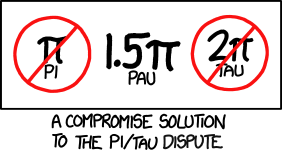Earlier this week my Twitter feed was flooded with reactions to the announcement of Amazon Prime Air. A vision which is compelling and sounds like something from a science fiction novel.
Flying robots delivering your impulse buys ordered from you smartphone within 30 minutes? Sign me up.
Amazon's Robotic Vision
A few have been skeptical of Amazon Prime Air and some such as Konstantin Kakaes at Wired have described the announcement as an hour long infomercial hosted by Charlie Rose that is full of hot air. There are definitely a lot of things that need to get better before drone-based package delivery is a reality. On the technology end there are challenges such as improving navigation software and the getting more efficiency out of battery power. On the regulatory end the rules and regulations needed to ensure the safety of the populace in the midst of these flying drones still needs to be figured out.
Unlike a number of the skeptics, I'm quite confident that a number of the technological and regulatory hurdles will be surmounted in the next 5 years. On the other hand, I also believe Amazon oversold the technology. The logistics of actually delivering a package to a customer has been glossed over quite a bit. If you look at the video, this is the optimal situation for delivering a package.

Now think about all the places in urban environments that don't meet this criteria; apartment complexes, condos, office building, etc. Then think about all the places where packages are best left on the doorstep close to the house which would be infeasible for a drone to land close to. In fact it's likely the 30 minute delivery claim is meant to address some logistics challenges by assuming you'll be there to pick up anything the drone drops off on your lawn or driveway before Johnny Sticky Fingers does.
My suspicion is that the true impactful usage of Amazon Prime Air will be 30 minute delivery drone delivery to Amazon Locker locations.
Google's Robotic Vision
This morning my Twitter feed is abuzz with the news that Google's Andy Rubin, creator of Android and longtime robotics enthusiast, has acquired seven robotics companies that are creating technologies to build a mobile dexterous robot. This effort will be part of Google X which is also the home of Google Glass & self-driving cars. Andy Rubin describes the effort as follows
“I have a history of making my hobbies into a career,” Mr. Rubin said in a telephone interview. “This is the world’s greatest job. Being an engineer and a tinkerer, you start thinking about what you would want to build for yourself.”
He used the example of a windshield wiper that has enough “intelligence” to operate when it rains, without human intervention, as a model for the kind of systems he is trying to create. That is consistent with a vision put forward by the Google co-founder Larry Page, who has argued that technology should be deployed wherever possible to free humans from drudgery and repetitive tasks.
To spell it out, Google’s efforts in automation under project X have been about augmenting the human experience in ways that eliminate repetitive tasks which humans are poor at such as driving where human error is a significant cause of the over 30,000 deaths a year in the US due to automobile accidents. Even this somewhat frivolous example of ringing the doorbell at Andy Rubin’s home taken from a 2007 profile of the Android founder is consistent with that vision
If the scanner recognizes you, the door unlocks automatically. (The system makes it easier to deal with former girlfriends, Mr. Rubin likes to joke. No messy scenes retrieving keys — it’s just a simple database update.)
Those forced to use the doorbell are greeted with another technological marvel: a robotic arm inside the glass foyer grips a mallet and then strikes a large gong. Although Mr. Rubin won’t reveal its cost, it may be one of the world’s most expensive doorbells.
At the end of the day, I’m more inspired by a company looking at automating away all
of the tediousness of every day life with Star Trek style technology from automated
doorways and self-driving cars to fully autonomous robots than a vision of making
impulse buying at Walmart 2.0 Amazon more convenient. I for one welcome
our new robotic overlords.
 Now
Playing: Adele – Rumor
Has It
Now
Playing: Adele – Rumor
Has It



